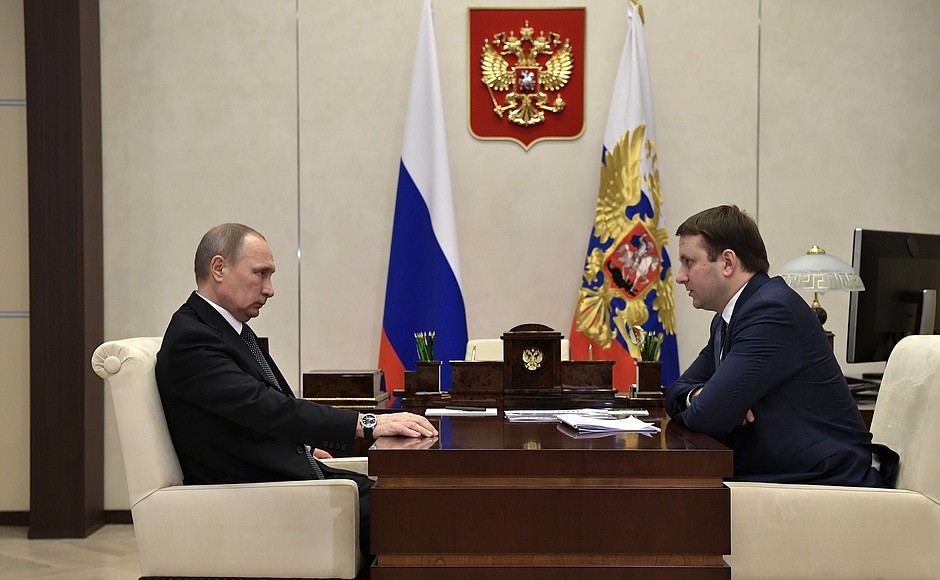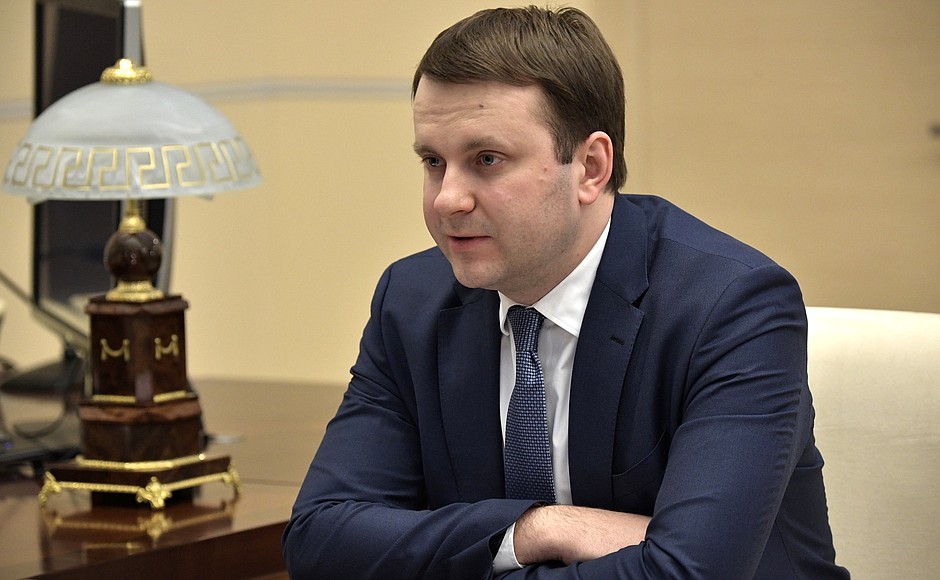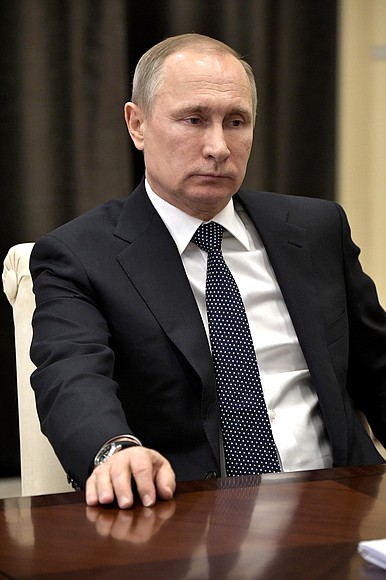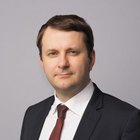President of Russia Vladimir Putin: Mr Oreshkin, do you have the final figures or the latest data on the 2016 results?
Economic Development Minister Maxim Oreshkin: I do. Rosstat [national statistics agency] reviewed the results for 2016. In principle, we can say that we ended the year on a positive note. If we look at the expectations we had at the start of 2016, we see that they were a lot worse, of course.
Our forecast was worse, and we had the international agencies and the IMF [International Monetary Fund] and rating agencies predicting a drop in GDP of around 2 percent (which was the case in the first quarter). However, the data from Rosstat shows that we ended up with a drop of 0.2 percent for the year as a whole.
Looking at 2016 overall, there were negative trends during the first half of the year, but the economy started growing during the second half. The figures were worse at the start of the year and then gradually recovered.
This was, of course, in large part the result of the financial and economic authorities’ long-term stability policy, which has gradually started to have an effect, has enabled the economy to adapt to the changing situation, and is now putting the economy back on a growth track.
As far as the start of 2017 goes, the situation is looking quite positive. The first figures we have for railway freight transportation and electricity consumption, for example, show very good growth. Railway freight transportation is up by around 9 percent on last year’s level. This is substantial growth and indicates that economic activity is starting to recover.
If we look at surveys of the business community, we see that the results show that confidence is at its peak since the start of 2011. This is also a very good result and a sign that economic activity is picking up again.
There is another significant difference between the situation in 2016 and 2017. In 2016, growth was concentrated primarily in such sectors as agriculture, the chemicals industry, and a number of sectors known as the traded industries – people working for the export markets, or competing with imports on the domestic market – they were on a positive track in 2016.
In 2017, we expect growth to extend to other sectors as well, including the consumer sector. We also expect population income to recover, and a positive trend to take shape.
Overall, we expect growth of around 2 percent in 2017.
Vladimir Putin: Good.
You do not yet have the final figures on inflation, but how do you assess the result there?
Maxim Oreshkin: Inflation is currently around 5 percent. We ended 2016 with a rate of 5.4 percent, and the downward trend continues this year. We expect that we will be able to bring inflation down to the target figure of around 4 percent by the end of this year. The Central Bank and the Government are working hard on this.
The most important aspect here is that bringing down inflation makes it possible to increase people’s incomes. This trend emerged at the end of last year and will continue in 2017.
Vladimir Putin: You must keep up this work constantly and work on inflation targeting together with the Central Bank, the Government, and get the Presidential Executive Office involved where necessary. Of course, you need to work with the regions as well.
Maxim Oreshkin: Yes, of course. There should be comprehensive work by all agencies in this area.
<…>



